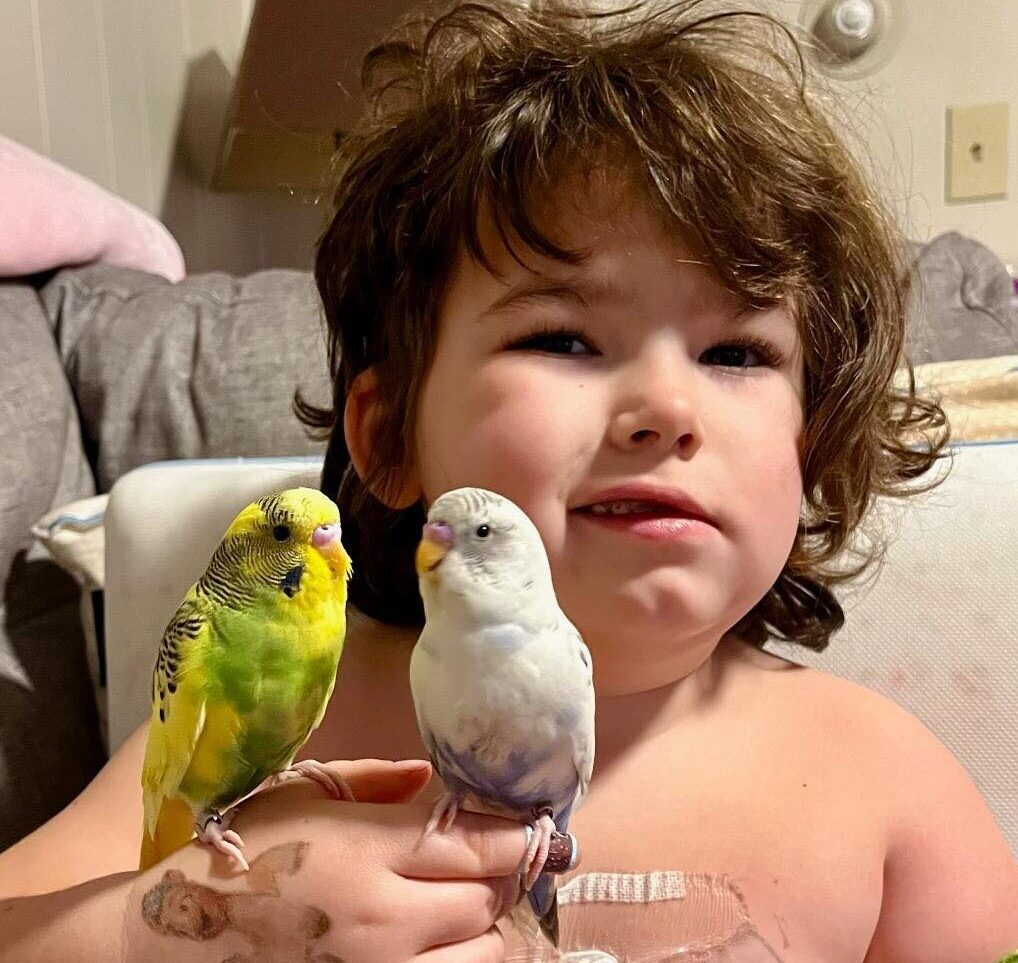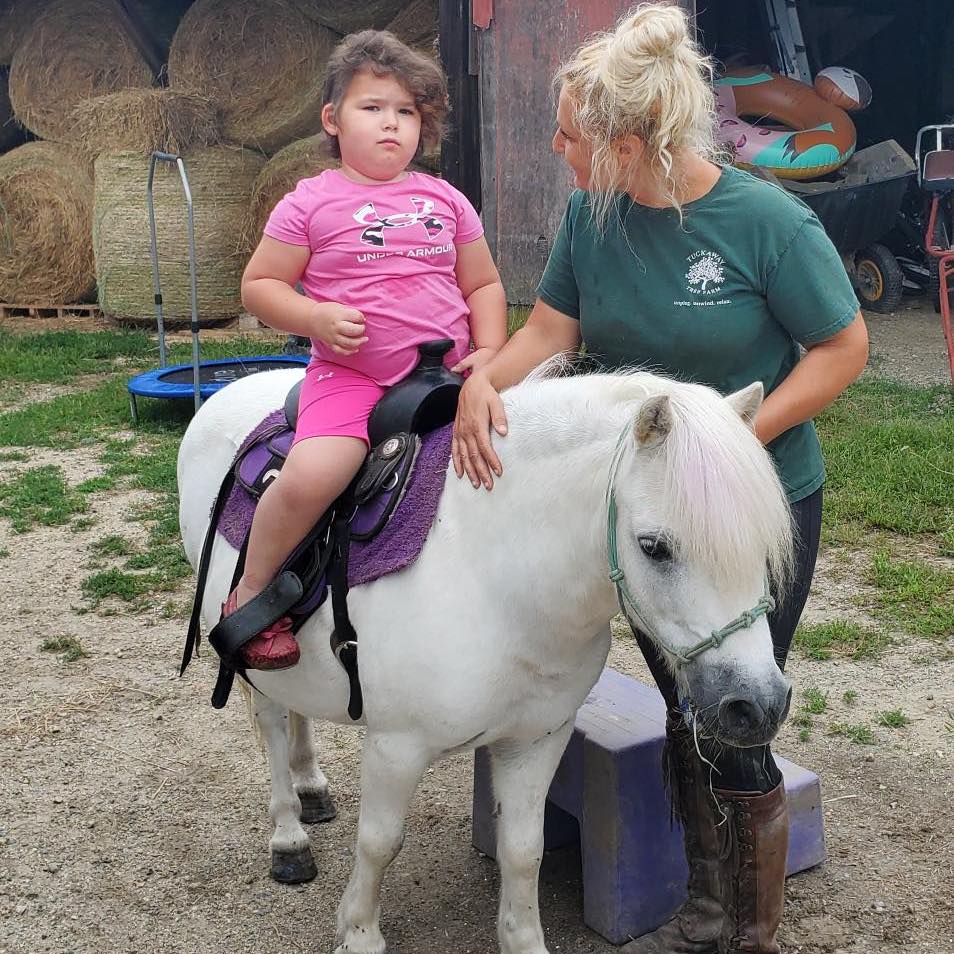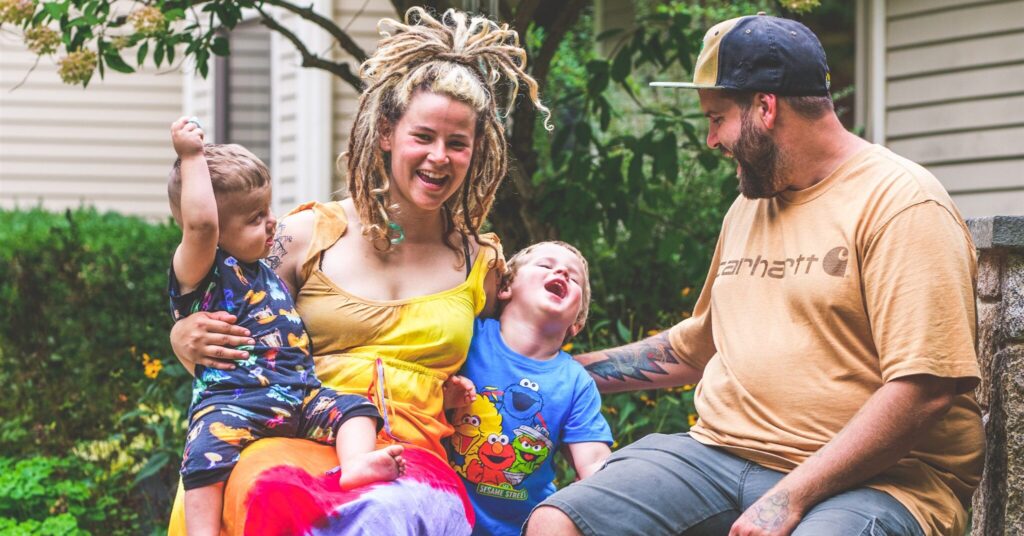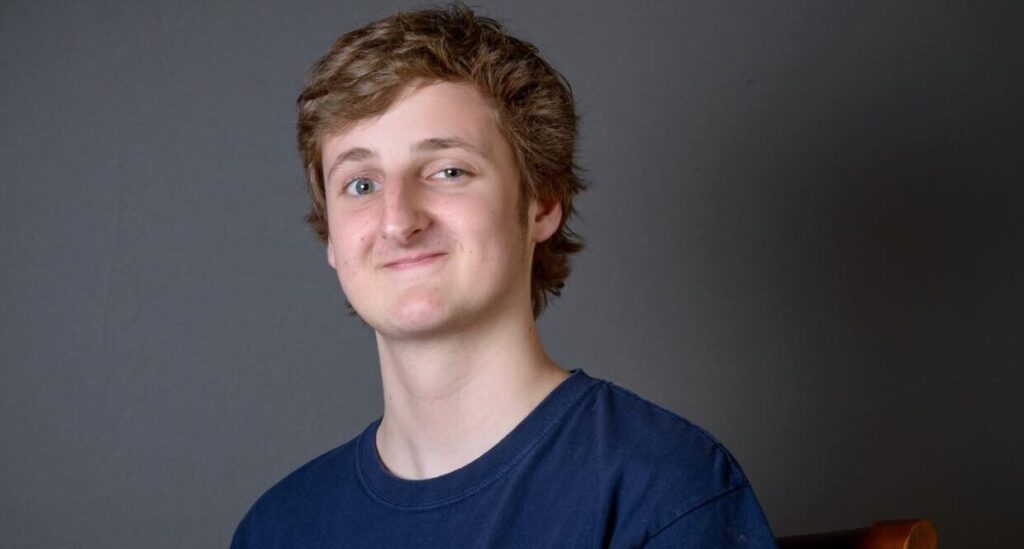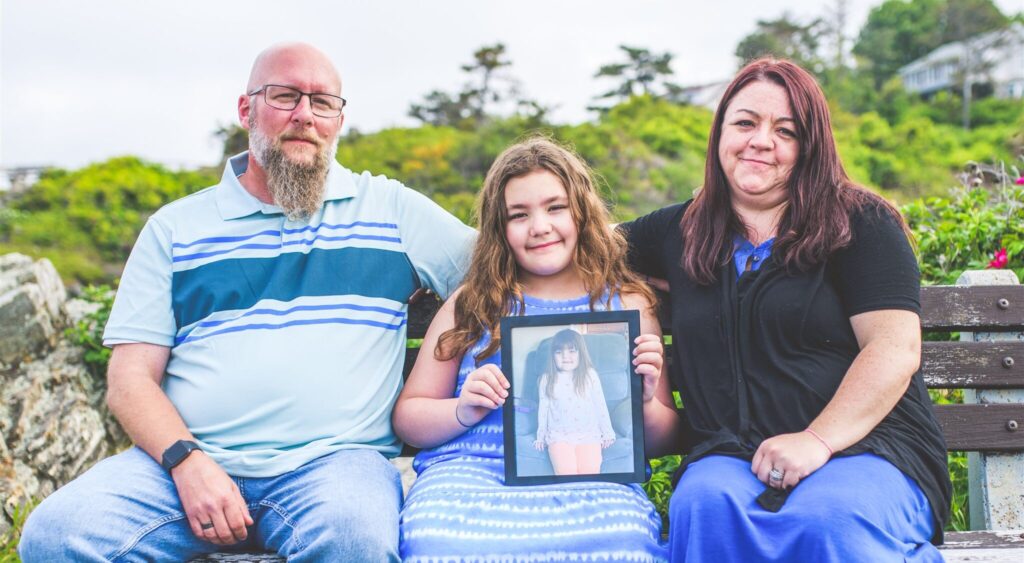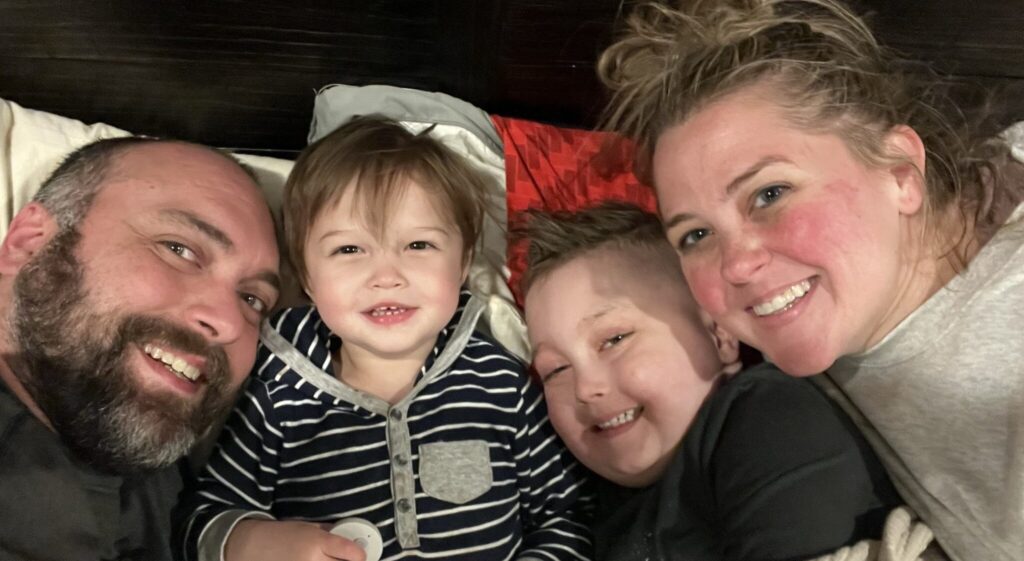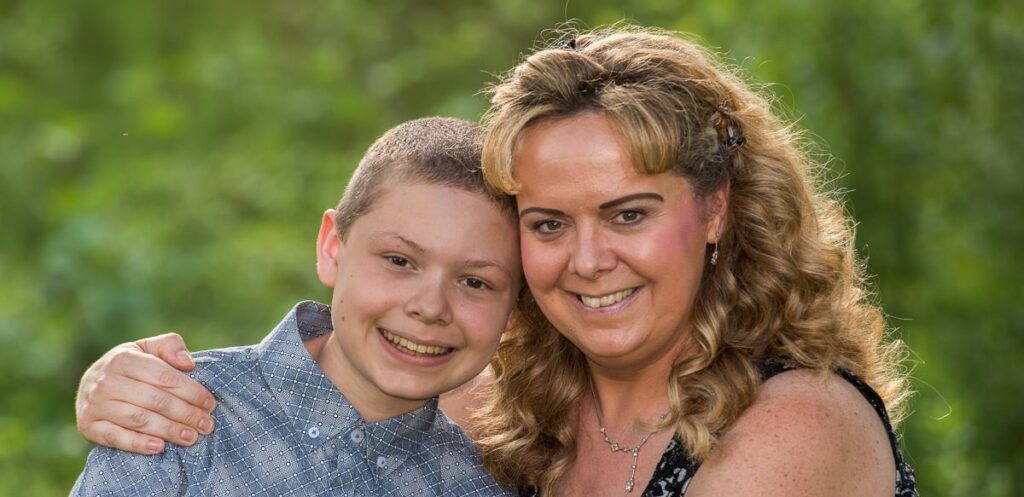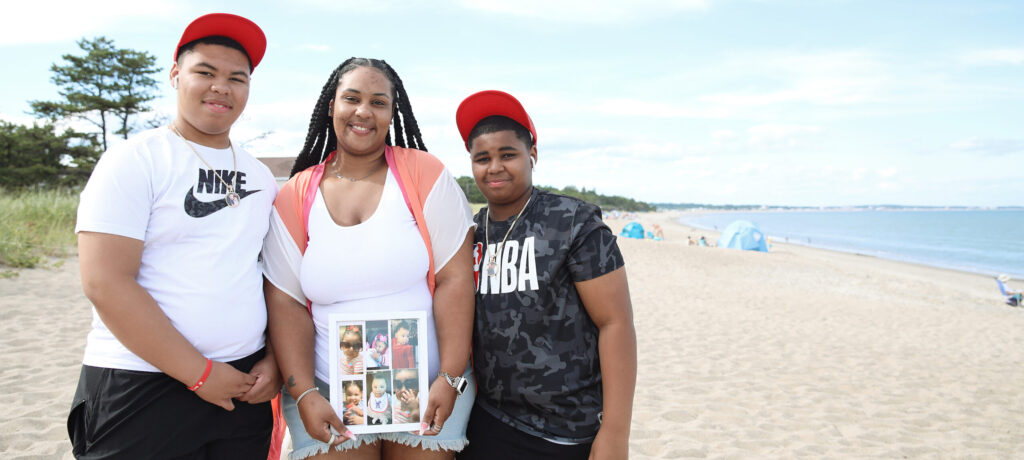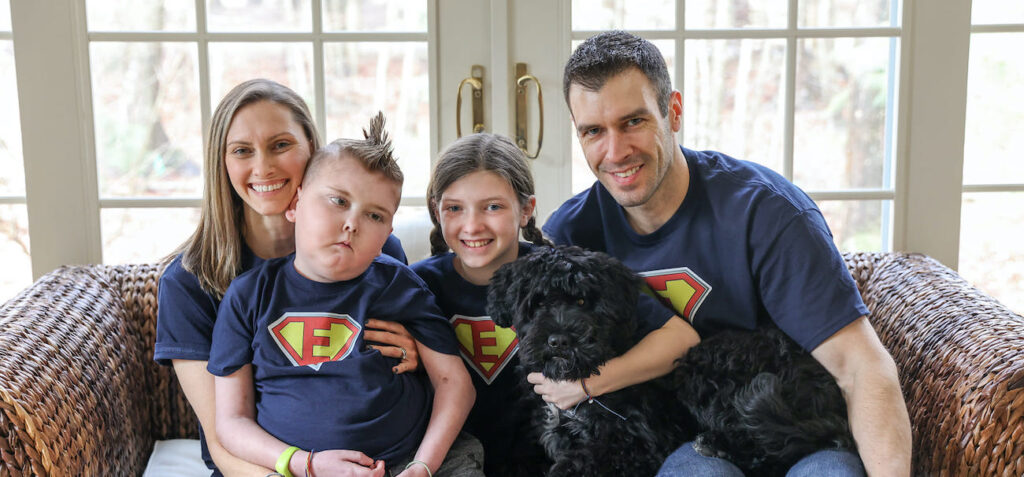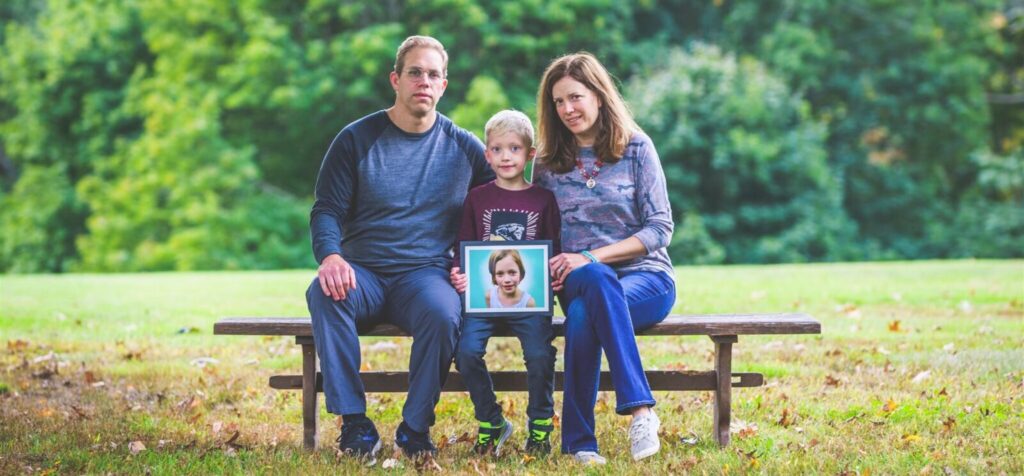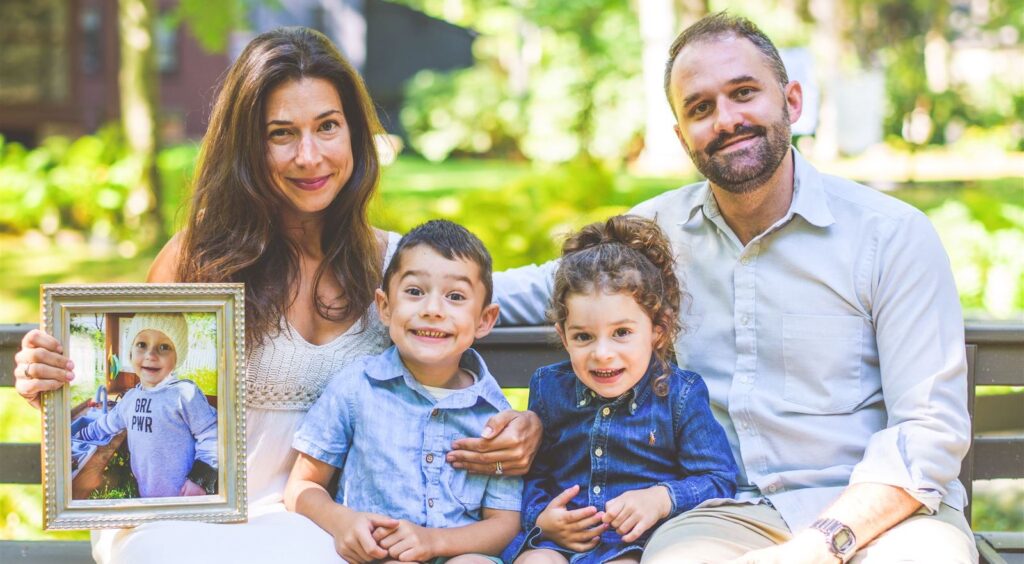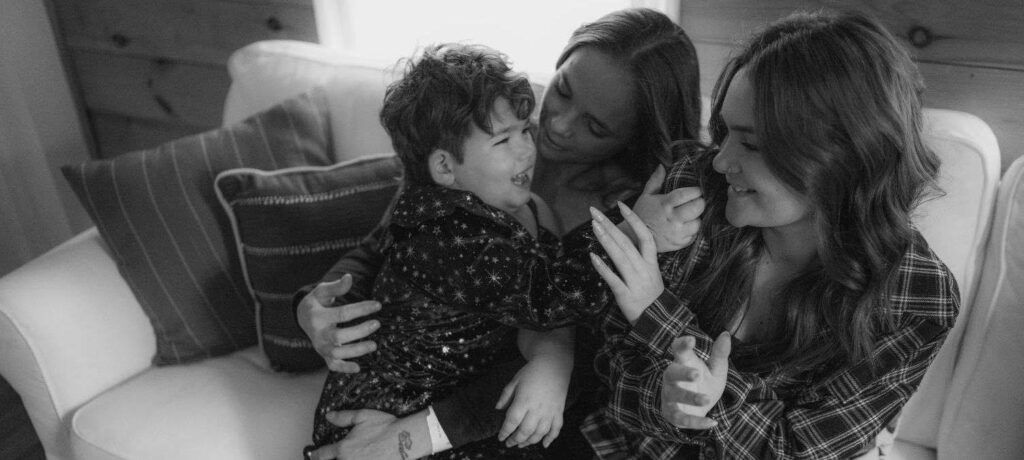
Back in November of 2023, our friend Libby at Make a Wish NH contacted us about a little girl named Hope living in Rochester. Hope had a very rare brain cancer that I hadn’t heard of before, called Astroblastoma, MN1 altering Bendz 2. And because it’s such a rare type, even doctors weren’t too sure how to treat it. Unfortunately, no matter what they threw at her cancer, it kept coming back. And now it was back with a vengeance.
I reached out to Hope’s mom Tabitha to see if she wanted to connect. And so on the week of Thanksgiving, with a meal provided by the wonderful Bill and Wendy Irish from For the Love of Food and Drink in Wells, I went to meet Tabitha, Hope, and her two little parakeets.
Hope was already on hospice by that point, and she would only live another two months. I was struck by their story, because this family had been through a lot more than just cancer…
Hope Elizabeth Marie Levesque, lovingly called Hopey, was born on September 12, 2018. Her mom, Tabitha, and big sister Ashlyn, were overjoyed to have her join their life. She brought them joy during a difficult time, as they were abandoned by her father, who suffers from drug addiction. It would just be the three of them, against the world… nothing could stop this strong-willed trio of females.
For three years, life seemed normal. Tabitha worked to become a journeyman carpenter, proudly supporting her daughters. Soon after Hope turned 3 and a half, in the spring of 2022, Tabitha started to notice something was wrong with her little girl. She started to not be able to keep food down, and was vomiting frequently. She would scream through car rides. Thrashing in pain. The doctors suggested she might have a gastro-intestinal issue, or lactose intolerance. This was just the beginning, however, because soon Hope started to lose her speech, and wasn’t able to lift her left arm.
Sadly, her doctors still were not seeing the signs of a brain tumor. For some reason, it is very common for pediatricians to avoid checking for cancer in children right away–like it is a rare, 1 in a million chance. We hear from so many families that their pediatricians brushed off these most obvious signs and symptoms. The fact is, 1 in 285 children will have cancer before they turn 20. And that ratio indicates that it is actually quite common. Everyone knows that early detection of cancer is so key. But for Hope, the doctors refused to see the severity of her condition.
In May of 2022, they reached a breaking point. Hope was in constant pain, particularly at night. She went from dragging her leg to no longer walking at all. Tabitha decided it was time to take her daughter to a new set of doctors, at Wentworth Douglas Hospital in Dover, NH. At first, they seemed annoyed. Why would she bring her daughter there when she had a doctor in Laconia (where they were living at the time)? But Tabitha persisted–why would no one help her baby? Finally the doctors agreed to do a full work up. Bloodwork came back normal, so they ruled out a seizure or stroke. She insisted they take a CT scan of her brain next… and that’s when they finally noticed the tumor, which was already 3″ in size.
Hope was rushed by ambulance to Mass General Hospital’s ER. The room flooded with doctors to prepare her for an emergency MRI. An oncologist came in to talk to Tabitha to inform her of the urgency. They sat her down and told her that Hope would need to have immediate brain surgery, or else she could die very soon. The surgery took 6-7 hours and the whole time Tabitha wondered if she’d ever see her little girl open her eyes again.
The gross total resection was a success but it left Hope in so much pain. She didn’t understand what was going on, and with the transition from anesthesia to opiates she became uncharacteristically angry and unmanageable. Although she needed to lay down and rest, she wanted to be upright. But in her thrashing, she split her wound open. They put a cap on her head, but she hated it. And wanted to rip out her IV. It was scary for her mother to watch her sweet little girl so furious and confused.
After spending a week in the hospital, she was released to Spaulding rehabilitation center in Boston for another two weeks. On June 30, she received her first proton delivery radiation treatment at MGH. For the next 7 weeks they stayed at RMCH. While there, she contracted RSV and had to pause radiation for a week. Luckily she recovered and would get to go home for 4 weeks, which would include her birthday celebration, before she would start chemotherapy. Her chemo treatment took place over the fall. Her tumor biopsy had come back “unmethylated” which wasn’t good news. That would be mean that she’d have to receive Lomustine (CCNU, CeeNU) instead of the more common Temozolomide (TMZ) treatment protocol. They weren’t sure this would work to keep the cancer from growing back.
On Christmas day of 2022, Hope woke up and opened three of her presents. Suddenly, she went into a seizure. Tabitha called 911 but they sent an ambulance that would transport her to Frisbee Hospital but not Wentworth Douglas. Because of the holiday, Tabitha was having trouble getting in touch with MGH. The EMT checked Hope’s vitals and told her she could drive Hope to her preferred hospital. At WDH, they did a CT scan. The results showed 3 new tumors. Hope was then immediately transferred to MGH by noon on Christmas Day.
MGH did many tests. They decided to discontinue the CCNU chemotherapy and started her on Avastin. Because of the location of the new tumors, she would not be eligible for surgery. They stayed in-patient for one week at which point Tabitha contacted Make-a-Wish to try to rush her trip. Things were not looking good for her sweet little girl.
On 2/24/23, Hope got to take her Animal wish vacation in Florida with her mom, sister, and grandmother, staying at Give Kids the world. Luckily, Hope didn’t have the same symptoms as before… there was no pain, vomiting, or left side weakness with these new tumors. She was in good spirits for her trip and got to enjoy Sea world, Animal Kingdom, Universal Studios, and Discovery Cove.
Hope had another scan on 3/10, and they learned that the Avastin had worked on 2 of 3 spots… she was now eligible for surgery where they removed the last tumor and planted radioactive seeds. The radioactive seeds would be active for 97 days. But after surgery, the left sided weakness started to return. At the end of May, she had a stroke. And another in June. She was hospitalized for a week each time. Her M1S1 and A1 arteries in her brain had thinned out so much that they branched out and she was having a lack of blood flow. They diagnosed her with William Moyamoya disease and prescribed blood thinners. But if she had a temper tantrum or got dehydrated, she could have another stroke, and one more would be devastating to her brain function.
September arrived and Hope’s 5th birthday party was amazing. Because she loved animals so much they rented her a petting zoo, which included pony rides. She also had a bouncy houses with water slides. Tons of her friends and family showed up. She played and got to open lots of presents. Her favorite gift was her beloved parakeets, Oreo and Cookie. Sadly, Oreo passed away a couple days before Hope.
Her next scan was 9/6. The doctors said the scan showed spots that looked like necrosis (dead cancer cells), but Tabitha knew it was the cancer coming back, and didn’t feel the same optimism as the medical team. They encouraged Tabitha to send Hope to school. But she was facing the same deficiencies–pain and nausea at night mostly. On 9/10 Tabitha noticed a bump on Hope’s forehead. It grew as the weeks passed. By her next scan on 11/7, her whole forehead was swollen. This lead to an emergency MRI where they confirmed two new masses. Tabitha’s intuition had been right.
At this point Hope’s doctor, Dr. Ebbs, gave Tabitha the devastating news that nothing more could be done. Throughout Hope’s treatment Tabitha had a good relationship to Dr. Ebbs. He visited every day when they were in the ICU or clinic or in-patient. He’d gave them all the time they needed and answered all of Tabitha’s questions with care and concern. He even gave them his cell phone number in case she needed to call.
Tabitha was told she could stay in the hospital but she decided to take Hopey home, knowing that was where Hope was happiest and that she could come back at any point if she couldn’t handle Hope’s medical needs or pain. Because the previous Christmas had been so traumatic, and since they weren’t sure how much time they had left with Hope, they decided to celebrate Christmas early on 12/2.
Cornerstone hospice started to visit to the house regularly, but it was never enough support. Hope needed a lot of pain mediation (which she adamantly hated taking) and Tabitha was beyond stressed caring for her very sick child. On 1/6, Tabitha made the choice to go back to MGH because Hope started violently throwing up, couldn’t breathe, and was experiencing massive headaches even with frequent doses of morphine and a fentanyl patch. They would be there for the final two weeks of Hope’s life.
The Friday before she passed Hope’s favorite nurse Lindsey came in to visit her. Hope had been sleeping for 3 days, but was able to engage by lifting her leg and gave her signature “no-no finger” to show her love.
Her last 24-hours were extremely traumatic. She was in so much pain despite all the medications, and kept waking up screaming for her mom to call the doctors. Tabitha was worried and called her family friends and Hope’s grandmother to come visit. After they left, Hope’s condition declined even more. At 5pm on Saturday she had a seizure, sitting up and grabbing for something. This was the first of 3 sets of 13 seizures. The doctors could not really help and were just giving her ativan and more pain medication. They would not admit that this was the end for Hope. After the last one, she never moved again.
Tabitha called for her mother to come back at 10pm because the she noticed Hope’s breath becoming crackly and uneven. Dr. Ebb came in at midnight after just returning from a vacation. He sat with them for several hours and admitted that the time was near. Ashlyn and Tabitha’s sister arrived in the middle of the night. After visiting for a while they went to sleep but Tabitha stayed awake by Hope’s side. At 5:50am on January 21st of 2024, Hope’s breathing changed and became softer and more spread out. She took about 5 gentle breaths and then just stopped. It was the end. Tabitha sat with Hope and a few people came in to visit, including Tabitha’s childhood best friend’s mom and neighbor, Sonya, and Angie, the mom of Hope’s best friends.
Hope was a fighter, there is no doubt about that. She was also very generous and loved putting candy in her little backpack so she could hand it out to friends on the playground. She loved her friends and would always try to wake up to play with them when they visited her, even at her sickest. Hope hated the dark, and especially when she had a tumor in her head. She found solace in a little light-up star pillow and her favorite baby blankie (no other blankie she received during treatment ever compared).
Her love for animals was fierce. She got to ride a pony three different times during her life and was deeply comforted by her birds, Oreo and Cookie. During the last weeks of her life she was able to visit Beecher Grogan’s farm, where they received a family portrait session and got to pet all of the farm animals.
Tabitha’s employer at North South Construction services has been extremely supportive though this whole time. They raised money for Hope and offered to pay for her services. They let Tabitha take time off when she needed and then took her back immediately when she wanted to work. And Tabitha also felt greatly supported by the people at Make a Wish NH, Cops for Kids with Cancer, Hope Floats, and the Children’s Brain Tumor Foundation. Although Hope never got to attend one of the Positively Healing Retreats for survivors with Rett’s Roost, we believe our grief services will be a great support to Tabitha and Ashlyn in the coming years.
If you feel inclined to help this single mom and teen daughter get through this most tragic time of their lives, please donate to their gofundme:
